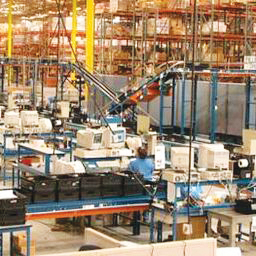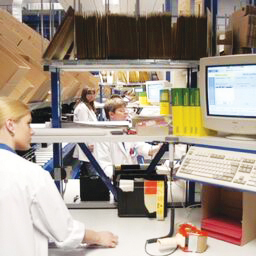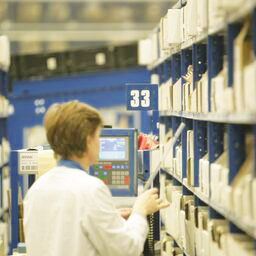
Disruptions add complexities to supply chain flow
By Tim Kolbus, vice-president, global logistics services, Arrow Electronics Inc.
Electronics Supply ChainVolatility and disruption are the new 'normal' within the supply chain.
Supply chains are complicated, and they become more time-sensitive and more complex as the number of supply chain disruptions increases. Canada ranked high again on this year’s FM Global Resilience Index, but even its supply chain isn’t immune to volatility and disruption.
Canada’s vast size and highly dispersed population centers are obvious challenges. Add in the global trend towards shorter product lifecycles and ever-present import regulations, customs clearances and taxes, and you have a unique set of challenge for distributors and suppliers trying to do business in the region.
Target famously miscalculated supply chain challenges when it expanded into Canada a few years back. Target survived its missteps, but other companies in a similar position may not have been as fortunate.
So, if a global corporate behemoth like Target struggles with its supply chain in Canada, how does your organization even stand a chance? With some diligent assessment and preparation, you’ll be encouraged to know you are on the right track.
The importance of risk assessment
Quite frankly, it’s shocking how few companies employ comprehensive risk-management strategies to protect their customers, suppliers, and their own business from supply chain disruptions. A recent study from Deloitte Consulting found that 53% of the global executives surveyed said that supply chain disruptions had become more costly to their organizations over the last three years, yet 45% said their supply chain risk management programs were only somewhat effective or not effective at all.
Arrow regularly assesses its risk profile and audits its entire supply chain. We want to know exactly where our greatest vulnerabilities lie so we can prevent a disruption before it starts. That’s good for our customers, it’s good for our suppliers and it’s good for our own bottom line.
A risk assessment might sound daunting at first. Rather than setting out to capture every single potential risk your company might face, start by looking internally at threats you can isolate and control. Once you have your internal house in order, it’s much easier to size up potential external threats.
Some key things to consider when evaluating risks to your supply chain:
* Prioritize Earnings-drivers and Critical Infrastructure: Arrow has two primary businesses, global components and enterprise computing systems. The demand for these businesses is different all over the world, so it makes sense for us to prioritize accordingly. In terms of critical infrastructure, focus first on safeguarding any internal systems that would seriously impact your earnings or brand reputation if they were to fail.
* Implement Standardized, Scalable Processes: Standardization not only saves time and money, it can also help mitigate risk. Henry Ford knew this when he set about mass assembling his Model T back in 1908 and the basic principle still holds true today. It’s why at Arrow, dedicated specialists manage specific aspects of our global trade management and compliance program—they become experts on a specific country and region-specific regulations, which makes them more valuable to our customers and better equipped to proactively identify future compliance challenges. The most effective standardized processes are those that can be easily scaled to meet increased demand.
* Monitor, Measure and Assess. Wash, Rinse and Repeat: The most successful supply chain managers are constantly measuring and analyzing risk in an effort to continuously improve the strength and flexibility of their operations. Arrow works hard to foster a “Lean Sigma” culture of continuous, collaborative process improvements. A recent Global Logistics Olympics initiative we held resulted in over $500,000 in cost-saving ideas for our distribution centers from Arrow employees around the world.
The new normal
There is no way around it, we need to get used to the fact that volatility and disruption are the new “normal” in supply chains. From the recent port explosion in China to severe weather events like Hurricane Katrina and the 2011 Japanese tsunami, it’s clear that serious and costly disruptions can and will happen.
Here are some major disruptions on the horizon that supply chain managers can, and should start preparing for now:
* IoT and Big Data:
The “Internet of Things” or IoT is expected to transform the way companies do business and create smarter supply chains that connect people, products and services in ways never before thought possible. By 2020, experts predict there will be 25 billion physical devices connected to the internet, and these devices will produce vast amounts of data. The smart, connected supply chain of the future will likely automatically notify a customer if a shipment of components arrives late to one of Arrow’s distribution centers and make any necessary adjustments to transport times and downstream manufacturing processes. You can’t build a connected supply chain overnight, so logistics professionals would be wise to start assembling their IoT building blocks now.
* Multi-channel Distribution:
By now, most companies have realized the tremendous potential of e-commerce. Arrow, for example, is currently undergoing a digital transformation to maximize the potential of this new distribution channel in getting components and value-added services into the hands of its customers. The move to e-commerce and other specialized distribution channels adds obvious complexity to a supply chain, and it will challenge logistics professionals to create a consistent customer experience.
* Emerging Market Growth:
There is a growing demand in emerging markets for electronic components and the value-added services that Arrow provides. At Arrow, we work hard at keeping our supply chain flexible and adaptive so we’re able to quickly adapt to changing market conditions like this.
Risk assessments and mitigation plans are becoming increasingly important as businesses globalize their operations and supply chain networks become more and more complex, interconnected and interdependent. Whether your business is operating in Ottawa, throughout Canada or all over the world, monitoring and planning for potential risks will go a long way towards creating a stronger, more flexible and more resilient supply chain.




